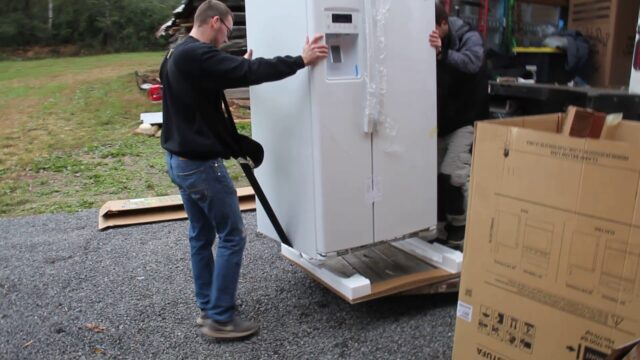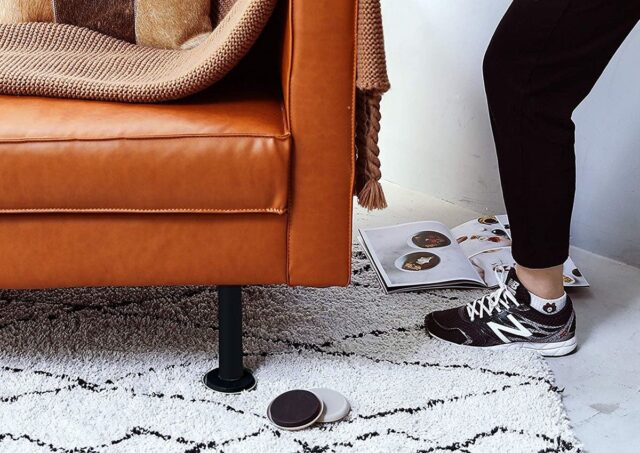
It is important to properly prepare your furniture when moving to ensure they stay safe and sound while in transit. This includes taking precautions to protect them from scratches, dents, and other damage.
To ensure that your furniture is adequately protected during a move, it is essential to do some simple preparation steps before the actual move. Let’s look at some of the ways to protect it.
Measure Your Furniture Pieces
Measure the heights, lengths, widths, and other dimensions to determine if they will fit in doorways or if they need to be removed completely before you move them.
Measure out any stairs, hallways, or elevators that your furniture pieces need to traverse as well. This is especially crucial when moving large and bulky items like mattresses and couches.
Gather Packing Materials
Start by acquiring packing materials such as bubble wrap, tape, shrink wrap, blankets, and pallet straps. All of these will come in handy during the moving process, so be sure you have enough to pack everything properly.
Bubble wrap and shrink wrap are great for protecting items during the move and keeping it safe from scratches in transit. Blankets can also be used to help cushion furniture while it’s moving in the truck or trailer; they’ll prevent items from shifting and being damaged during transport.
Pallet straps can be used to secure large items like mattresses and couches while they are being transported. It’s also important to have plenty of tape on hand as you will need to make sure all packages are sealed tightly before loading them into your moving vehicle.
Take Apart Items that Can Be Disassembled

Any piece of furniture that can be taken apart should be taken apart before it is loaded onto the truck. This includes garbling up shelves, removing legs from tables, and unscrewing headboards. It apart can help minimize the amount of damage that may occur since larger, more fragile furniture pieces will not be jostled inside the moving truck as much.
It can also help save space when packing up large items like bed frames and couches into tight-moving trucks or trailers. Additionally, by making sure all of its components are securely packaged, you can rest assured knowing that no pieces will be lost or damaged during the move.
Label Pieces and Store Screws and Hardware in A Bag
Before you start, label each part of the item and make sure not to miss any screws or other hardware that may go astray during the process.
Grouping pieces together before separating them can make reassembly much easier in the end. Store all small screws and other hardware in a baggy or container so they won’t get lost while they are being transported.
Use Dollies and Straps

Dollies are wheeled carts that make the job of moving furniture easier by providing greater weight support. When using a dolly, be sure to secure the furniture with a strap before lifting it onto the dolly—this will ensure that your item stays in place during transit.
Alternatively, you can purchase lifting straps that incorporate cushioning material and handles. These help to minimize friction and distribute the load more evenly while also protecting walls and other surfaces from scratching or denting caused by shifting objects. When moving large pieces, two or even three people may be required in order to lift safely.
Place Heavier Items on The Bottom of The Truck
To Protect Your Furniture When Moving, you can layer up to three large pieces of furniture on top of one another, or place mattresses and box springs underneath any couch or armchair. Make sure that each piece is secure before laying it down in order to prevent it from tipping over during loading. Then place lighter, fragile items on top, and be sure to pad everything with blankets or furniture pads for added protection during transport.
When securing items inside the moving vehicle, it’s important to use straps in order for them to remain secure during transit. Straps will help keep heavy items from shifting side-to-side and reduce chances of damage by keeping everything from falling over when navigating sharp turns or quick stops. Also, if possible, try and leave an aisle of space in the center of the moving vehicle you can walk through safely; this will make accessing other items easier throughout the journey.
Have a Plan for Where the Furniture Will Be Placed

Designate a spot in each room where the furniture will be placed before commencing the unloading process. Doing this ahead of time helps to ensure that couches, tables, and chairs are immediately brought to their designated rooms, as opposed to being moved around or shuffled around once inside the house.
This will help save time and reduce potential damage to your furniture due to constant handling and movement. Ensure hallways are cleared, so moving large pieces of furniture won’t be a challenge while shifting it into its place in the intended room.
Use Sliders to Move Furniture Easily
Furniture sliders can make the job of unloading your furniture much easier. These sliders are constructed out of materials such as wood, plastic, or rubber and provide a layer of protection between furniture and the floor. This helps to keep furniture from being scratched or gouged when you move it around.
To use them, simply place the appropriate size slider underneath each corner of your furniture and slide it across the floor. This way, you don’t have to lift heavy items in and out of moving trucks, which can be treacherous for sofas with sharp corners.
They also protect walls from scuff marks when you slide furniture up against them for easier access points in your new home. Be sure to remove the sliders before placing any foot traffic over them.
Moving can be a stressful time, but by taking a few simple precautions you can help protect your furniture and keep it in good condition. By following these tips, you can rest assured that your furniture will arrive at your new home safe and sound.














